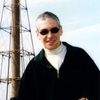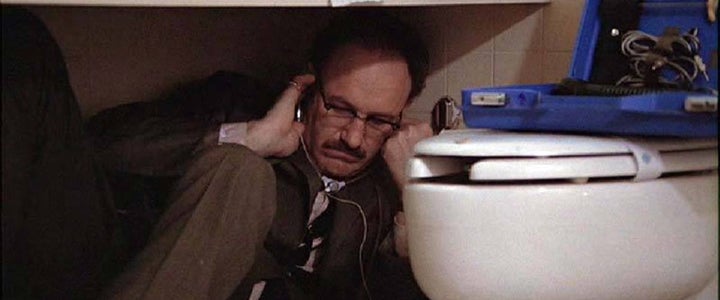
Gene Hackman, The Conversation
The president is on a tear about all things (and people) that record and perhaps some that may have been on or near his person during meetings with now former FBI director, James Comey
“James Comey better hope that there are no ‘tapes’ of our conversations before he starts leaking to the press,” a duly agitated President Trump wrote on Twitter.
It wasn’t really clear whether it was the prez himself who was the bearer of the hidden microphone.
Yes, it was White House high drama at a level not seen since Alexander Butterfield revealed the presence of a secret White House taping system during Nixon’s tenure in the Oval Office and the current kerfuffle captures much of the aroma that infused Francis Ford Coppola’s 1974 Hollywood thriller, The Conversation (although I doubt, that unlike the film, whomever is doing the recording will have a crisis of conscience similar to the one endured by the flic’s protagonist played perfectly by Gene Hackman).
I’ve had a fascination for all things that record and chalk that up to my father’s love of “gadgets.” Despite having little money to spare – living in a walk-up tenement in Brooklyn – he’d invest in stuff like an early 1950s Webcor reel-to-reel tape recorder, periodically parking it – and me – in front of our tiny-screen black and white TV to record live opera (when the networks were imbued with a bit of high culture). I’ve fond memories of watching the recorder’s green “magic eye” pulse along with the arias of Madame Butterly; becoming so mesmerized I’d often miss the moment when the reel end of 3M tape spun wildly in finality while I scrambled to thread a new one.
At NYU Film School – in James Manilla’s sound course, circa 1970 – I was introduced to a piece of technology: so beautiful, so perfect, I still get thrills just looking at it.
The Nagra tape recorder.
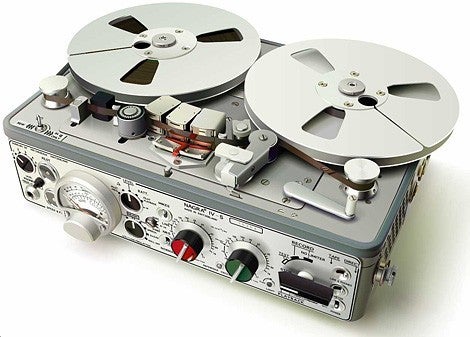
Nagra IV series tape recorder
It was a major advance in film production portability. No longer were film crews forced to lug huge recording contraptions tethered by wires and cables to cameras. The Nagra could easily be schlepped on the shoulder of a sound person and the advanced models could keep audio and picture in synch without the need for connecting wires; a situation which previously required sound folk to do pirouettes around camera people to avoid tether entanglements and subsequent pratfalls.
The Nagra was the invention of a brilliant Pole by the name of Stefan Kudelski and what Buddy Holly was to rockabilly, Kudelski was to audio engineering (and like Buddy’s statue in Lubbock, Texas, Kudelski deserves his own in central Warsaw).
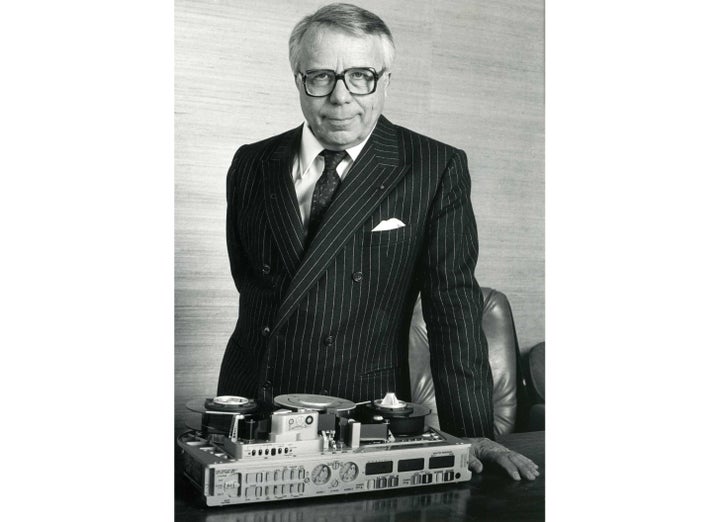
Stefan Kudelski
My company, Pacific Street Films, had a succession of Nagras starting with a clunky Nagra III; progressing to the sleekly gorgeous Nagra IV, IV-L and the more compact I-S and we’d get all our gear from a grand guy (RIP) by the name of Ron Topham, who owned a Manhattan-based company, Audio Services.
Topham was the “man.” He could answer just about any question regarding challenges posed by recording in strange or awkward situations which is why the Nixon White House approached him to install a series of Nagras in White House offices and telephones (all voice actuated).
It took Ron years of knowing and trusting us to finally admit to the deed.
Yes, according to Ron, they made the best investment in the best audio technology money could buy and history, daresay, is forever grateful.
I don’t remember which model Nagra he installed; perhaps it was the ultra-miniature (and very hidable) Nagra SN whose sound reproduction was so superior that the FBI had legislation passed to prohibit the selling of some of the full-featured models (just to be fair, there are some audio people who claim that Sony TC-800 reel to reels were also used by Nixon).
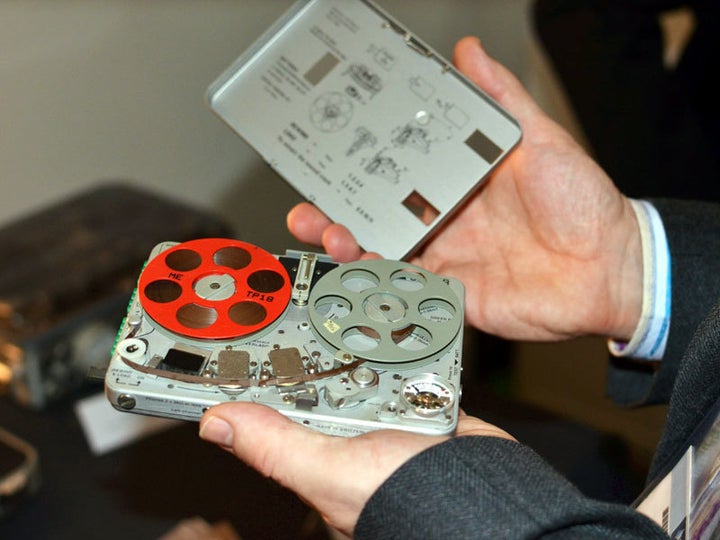
Nagra SN
Eavesdropping and wiretapping are pursuits that have titillated the public for time immemorial. Who can deny the downright fascination of listening to what people say behind closed doors or solid walls; say John Gotti, heard on FBI hidden mikes, waxing poetic about why a victim is going to die: ''He's gonna die because he refused to come in when I called.” Or simply, about another victim: “he’s gotta get whacked {emphasis mine}”
And conversations through the walls? I can remember as an adolescent, taking a glass — open side held against the wall, bottom held against my ear — listening for clues to why Anthony’s mother, in the adjacent apartment, kept up a non-stop shrill screech, “Anthaneeeee! Who bought you that fucking pack of Marlboros? Wait till your father gets home!”
Then there were downright belly laughs when two friends, living in San Francisco, began, in 1987, to secretly record the next door ramblings of two “raging alcoholics” – Peter and Raymond – in all-night screamfests; one castigating the other for being a “bitch,” a “queer cock-sucker;” and punctuated with repeated admonitions: “shut up little man!” (which became the title of this audio experience). It went viral in a pre-You Tube era.
With much media hand-wringing over the issue of wiretapping and eavesdropping – denials here and there, everywhere – there are still some low-tech ways to listen in on telephone conversations and if you’re afflicted with a Glenn Greenwaldian sense of uber-paranoia, you might want to check your cordless phone.
Many of the older analog models communicate along frequencies accessible to any pimply tech/nerd kid with a cheap over-the-counter police scanner. While said audio voyeurs may have to sidle up close to your house or apartment to be in range they stand within their rights to partake of any late night conversations involving mistresses and/or purveyors of phone sex.
Even easier and wholly legal in many states is recording conversations under what’s known as single-party consent laws; essentially allowing you – the single party – to secretly record the person you’re conversing with just so long as you – the single party – knows it’s being recorded. Lists of states that offer this possibility can be easily be found on-line.
I’ve used this method to legally memorialize memorable calls with a decidedly low-tech contraption.
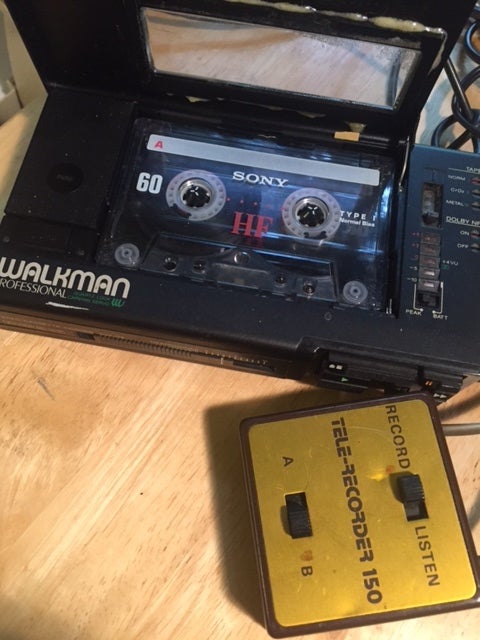
Dated contraption to record calls (still works!)
And listening in to White House conversations from afar?
I remember interviewing a former Army intelligence agent for a 1971 public television documentary, Surveillance: Who’s Watching? and he candidly discussed the development of a device which could overhear conversations from a distance by focusing a special shot-gun style mike on the windows of the domicile belonging to the target. The conversations within would cause oh-so subtle vibrations on the window panes which could, according to this agent, be transformed into audible speech.
And that was 1971. Imagine what’s out there now...
Joel Sucher is a co-founder of Pacific Street Films (together with Steven Fischler) and has written for a number of platforms including American Banker, In These Times, Huffington Post and Observer. com. He and Pacific Street Films co-founder, Steven Fischler, are working on a streaming series about their experiences at NYU Film School.
